C-MARC™ Grounding Cable offers the best connection of enclosures, stands, and other conductive objects to your building's ground. It comes in two different sizes and several termination options. The small size is based on our Bulk Hook-up Wire, size 0.864mm
2 total conductive cross section. The large size is based on our Bulk Hook-up Wire, size 2.304mm
2 total conductive cross section. The cable is extremely lightweight and highly flexible. Customize your version below in the configurator.
C-MARC™ stands for Common-Mode Auto-Rejecting Cable.
C-MARC™ is unlike any other hook-up wire or cable currently produced. It is based on the bucking coil method of noise reduction, used most famously in twin coil pickup designs first developed in the mid-1930s to silence hum from electric guitars.
This type of guitar pickup was called ‘the humbucker’ because it 'bucks the hum', i.e., noise, out of the desired guitar signal through phase cancellation of two counter-polarised inductors. When the inductors both induce a common signal, it is induced in opposite polarities by each coil. These opposite polarities then mutually cancel when the two counter-polarised noise currents are combined through simple electrical summation. Humbucking coils are also used in some microphone designs, as well as in sensitive sensor technology where induced stray noise is not acceptable and the highest signal-to-noise ratio is desired.
LessLoss designs a new type of wire around the humbucking principle.
C-MARC™ wire is a special type of Litz wire. It features all of the known benefits of traditional Litz wire, but without the disadvantage of being formed as an elongated coil (inductor).
Traditional Litz wire has the following advantages over normal 'naked' multi-stranded wire and solid core wire:
- Litz wire has a greater ratio of surface area to cross sectional area, resulting in less phase smearing between lower and higher frequencies.
- Litz wire creates no distortions due to so-called “strand jumping” or diode effects resulting from loosely contacting oxide layers of adjacent naked strands.
- Litz wire is more flexible, practical, and safer than solid core wire of the same large cross-sectional area.
C-MARC™ wire shares all of the above advantages of traditional Litz wire and advances the art with these additional unique benefits:
(1) Traditional Litz wire is bunched and then twisted in only one direction, leading to the formation an elongated group of uni-directional coils (inductors) of differing diameters, its structure resembling elongated overstretched springs of different sizes.
[
Fig. 1.: Sketch of typical Litz structure where multiple coil diameters and single coil turn direction resemble several overstretched springs bunched together. This structure allows high speed of production.]
[
Fig. 2.: Each long separately insulated Litz wire can be seen as a separate coil of a given diameter and step. The different diameters are a result of the bunching before mutual twisting.]
[
Fig. 3.: Individual wires of differing thicknesses are bunched together to form different geometries. Many variations of the Litz structure exist, most of which are based on the main idea of first bunching and then twisting into spirals.]
[
Fig. 4.: Some manufacturers offer braided Litz wire,
so-called “Type 7” Litz. This wire also is formed from initially bunched and mutually twisted strands before braiding. This type of wire is compressed after braiding the twisted bunches into an overall rectangular shape before tape wrapping and over-extrusion.]
How C-MARC™ is profoundly different
In contrast,
C-MARC™ wire goes down to the very fundamentals in a completely mirrored, balanced geometry. It aligns every Litz strand's clockwise turn with a corresponding counter clockwise turn of exactly mirrored diameter and step along the length of the wire. These two resulting spirals are mutually superposed in counter-braided fashion. Noise is thus induced in exactly opposite polarities and in exactly mirrored amplitudes, while the good signal is common to both spirals. The two counter-polarised noise signals mutually cancel when the two counter-polarised currents are combined through simple electrical contact at both ends of the wire. Thus, through auto-rejection of opposing electrical phase through summation at the ends,
C-MARC™ wire perfectly counters the noise induction, whether from external sources or self-induced, which normally pollutes every other twisted Litz wire assembly. In this way,
C-MARC™ wire achieves signal transfer which is corrupted substantially less than the industry has been able to achieve through other means.
[
Fig. 5.:
C-MARC™ Litz schematic layout. The clockwise and counter clockwise spirals are mirrored in diameter, step and wire gauge, while at the same time superposed in relation to one another. This results in opposite phase induction within the very structure of a single polarity line. While production speed is substantially slower, the silence of operation of C-MARC™ wire is far superior to standard Litz structures.]
(2) This is not all! LessLoss
C-MARC™ wire features two-scale ‘fractal’ replication of the aforementioned mutually superposed counter-twisted layout. This mirrored and nested structure further enhances the mutual cancellation of counter-polarised inductive twists, while at the same time allowing enlarged overall cable cross-sectional designs which serve to further lower resistance without any sacrifice of signal fidelity or flexibility.
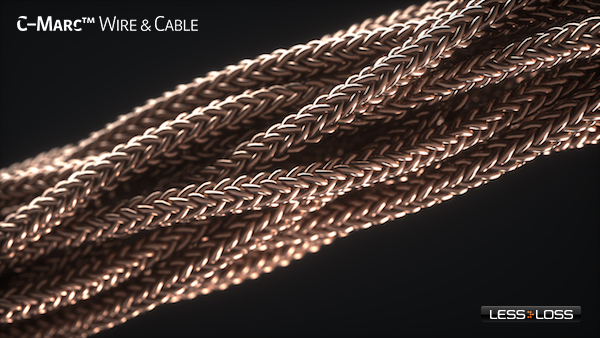
[Fig. 6.:
C-MARC™ shown in two-scale fractal replication. Everything that occurs geometrically at the core level is repeated again at the larger level, thus further reducing the induction of noise. Just as the initial clockwise and counter clockwise spirals are mirrored in diameter, step, and wire gauge, while at the same time superposed in relation to one another, so too at the larger level. This makes the cable a silent performer without influencing the natural tone colour of sensitive signals throughout the frequency spectrum.]
What this means
C-MARC™ is intrinsically the most silent wire on the planet and provides pure transmission of signal. The degree of silence of the working solution is in direct proportion to the degree of superposition of the counter-polarised twists, as well as in the degree of their mirrored equality in terms of turn radius, step, and resistance. The idea being that in the best of worlds, both opposite ‘polarities’ of a single lead of
C-MARC™ wire induce the exact same noise, and a perfect summation to zero will result at both ends of the line.
(3) Because the individual enamelled wires which make up the unique Litz structure of the
C-MARC™ wire are so small in diameter (0.125mm), the ratio between total surface area and total cross section is further enlarged for an even better phase relationship across the entire spectrum.
(4) This structure further enhances flexibility and ease of bed on any axis, especially for large cross-sectional cables, without unnecessarily enlarging the entire cable assembly.
(5) The strands used in
C-MARC™ wire are covered with the thinnest technically possible colourless enamel. They are solderable once tinned in a soldering pot.
(6) There is no plastic at all; instead,
C-MARC™ wire and cables are insulated with tightly braided, 100% natural, gassed, and macerated cotton fibre with double coverage for added protection. This results in a very lightweight, highly flexible, natural-sounding product with today's best performance characteristics for delicate audio applications with an enormous signal-to-noise ratio.
What can I expect in terms of sound?
Well, you won't hear coloration, that's for sure. You will however hear a lot more of the music's expression and true content.
Click here for a bunch of reviews which will show you how various people in the press and users have expressed what they have discovered using
C-MARC™!
How does the new C-MARC™ Bulk Cable compare to the DFPC, Anchorwave and Homage to Time?
The tonal character of
C-MARC™ is more liquid, fluid, and resolves more detail from any recording. As good as the DFPC, Anchorwave and Homage to Time are, they are still made of plastic (albeit very high quality plastic with excellent characteristics). Over and beyond the improvement in
C-MARC™ that it is made entirely of cotton and a very thin layer of clear lacquer instead of plastic, the extremely well balanced counter-polarized coil technique lowers the noise even further than the methods employed in our legacy products, so the overall result is one of both lowered noise as well as one of purer tonal character. It is very easy to recognize these improvement straight from the start, even without burn-in.
After about 14 days of settling, the sound quality becomes even more organic and life-like.
C-MARC™ is here to stay for a very long time. We feel confident that after a few years it will be recognized and employed in many different manufacturers' loudspeaker and equipment as internal hook-up wire.
One further advantage of
C-MARC™ over both Anchorwave and Homage to Time is its extreme flexibility and light weight. Thus, even sensitively placed lightweight gear has the very best conditions to maintain the fine vibration control of even the most delicately positioned special tuning feet. See the following image for an idea of
C-MARC™ cable's flexibility.
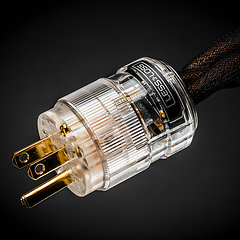
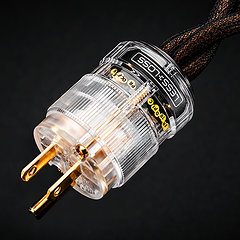
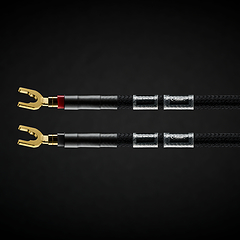
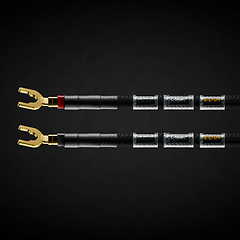
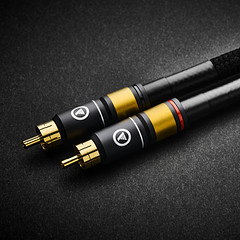
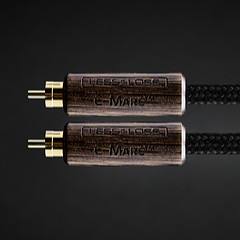
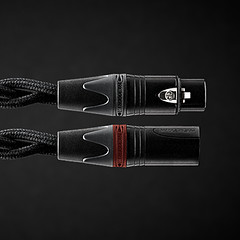
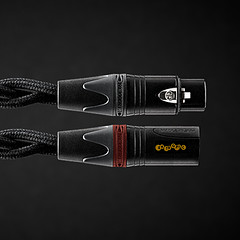
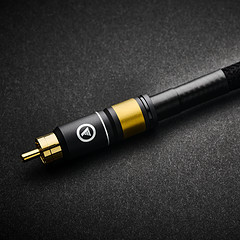
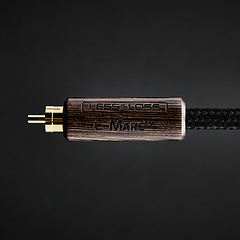
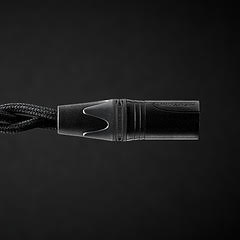
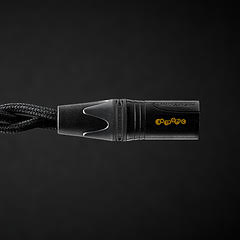
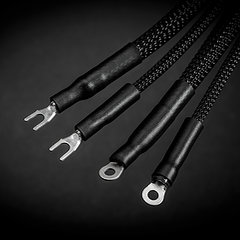
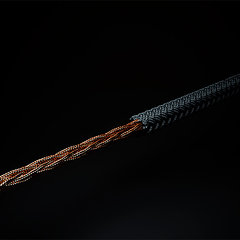
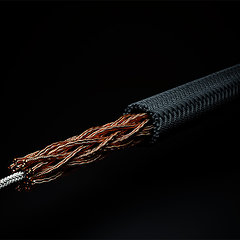
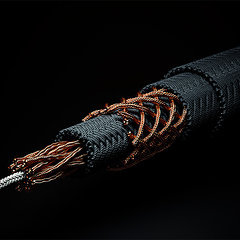
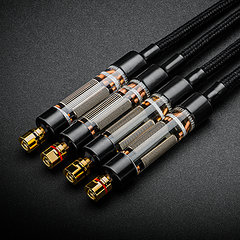
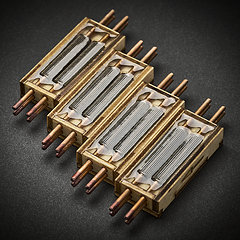
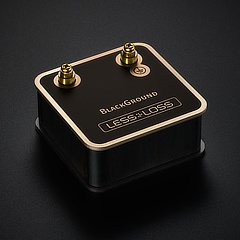
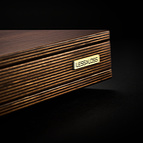
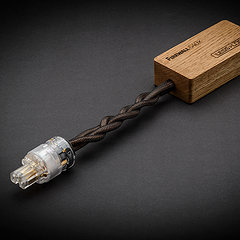
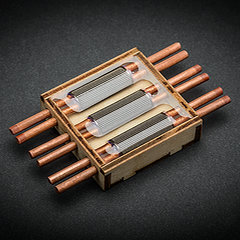
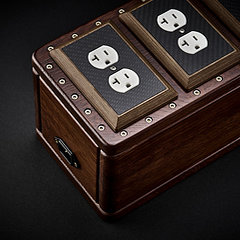
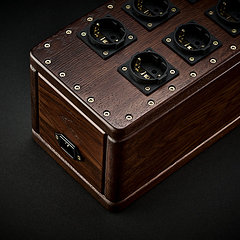

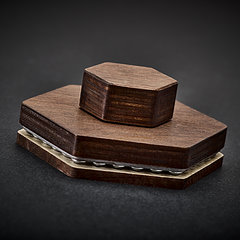
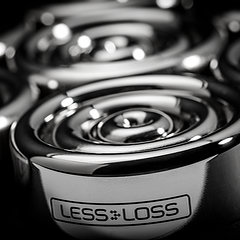
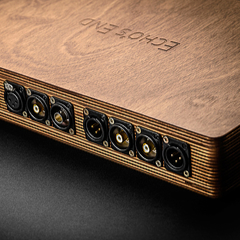
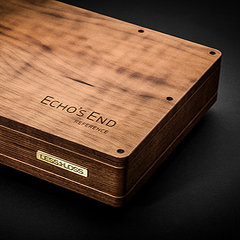
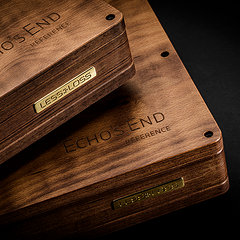
 Beware of Fakes
Beware of Fakes
